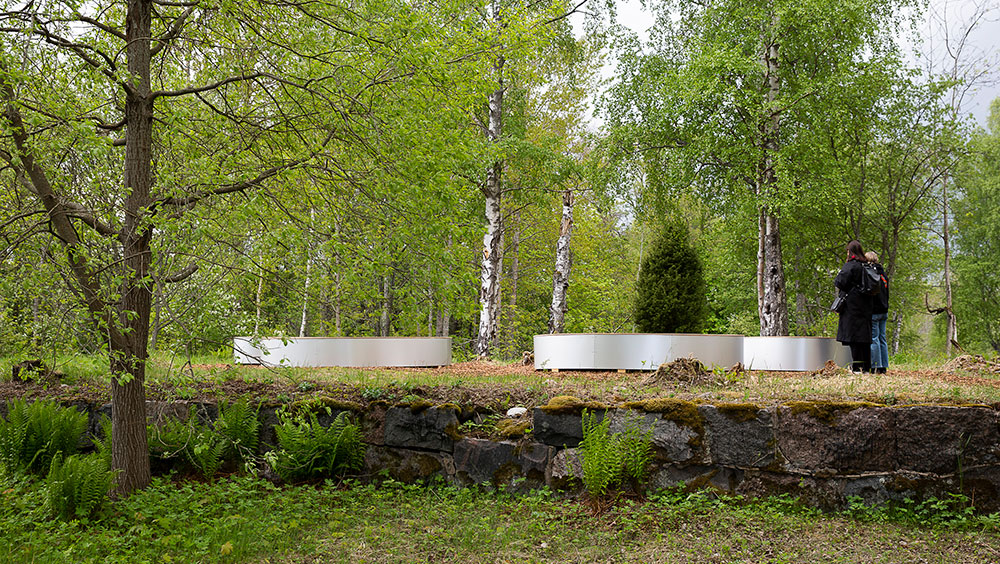
Mohamed Sleiman Labat and Pekka Niskanen, PHOSfate, 2023. Courtesy of HAM, Helsinki Biennial and Sonja Hyytiäinen.
Vallisaari Island, Helsinki Art Museum and various venues, Helsinki
11 June – 17 September 2023
by VERONICA SIMPSON
Zen teachings say disappointment is good for us, that we should welcome those familiar pangs of deflation as an opportunity to assess whether our expectations have misled or misguided us. I confess to initial feelings of disappointment with the second Helsinki Biennial. The first one set the bar high. There was the enchantment of sailing from Helsinki harbour to the exhibition site - the island of Vallisaari, opened to the public for almost the first time since it had been occupied by the Russian military in the 19th century and virtually abandoned to nature after Finnish independence in 1917. What would we find there?
Within minutes of arriving, we encountered Jaakko Niemelä’s Quay 6 (2021), a red marker on a scaffold platform 6 metres above the sea, dramatically expressing the predicted rise in global sea levels were Greenland’s northern ice sheet to melt. Behind it was Tuomas A Laitinen’s ΨZone (2021), a gorgeously science-fiction, subterranean laboratory of glass creatures. Then Katharina Grosse’s exploded rainbow shards of wood (Shutter Splinter, 2021) protruding from an abandoned school, evoking its previous military and educational peculiarities, followed by Alicja Kwade’s Pars pro Toto (2018), a cluster of giant marbles quarried from every continent, perched on the seashore. They looked for all the world like tumbled planets.
,-Sanctuary,-mist,-2023.jpg)
Remedies (Sasha Huber and Petri Saarikko), Sanctuary, mist, 2023. Courtesy of HAM, Helsinki Biennial and Kirsi Halkola.
This one starts at a much lower volume. Among the first works encountered after the 20-minute ferry ride from Helsinki is Sanctuary, a work by Sasha Huber and Petri Saarikko, which involves intermittent bursts of vapour, emitted from a platform perched far off in a freshwater lake. Yes, when the clouds appear and drift around, they cast an eerie glow over the water and vegetation, which is mildly interesting, but I have seen far more articulate or arresting artworks using vapour, such as those installed at Tate Modern by Japanese artist Fujiko Nakaya in 2017. Nearby, there is a sculpture high in a tree by Adrián Villar Rojas, which seems (although it is hard to make out any detail) to be inspired by fungus, or possibly tree rings, and – if you peer very closely through the leaves, it has a gremlin-like quality to it, as if it could suddenly transform into a Jim Henson-like puppet. But it doesn’t.
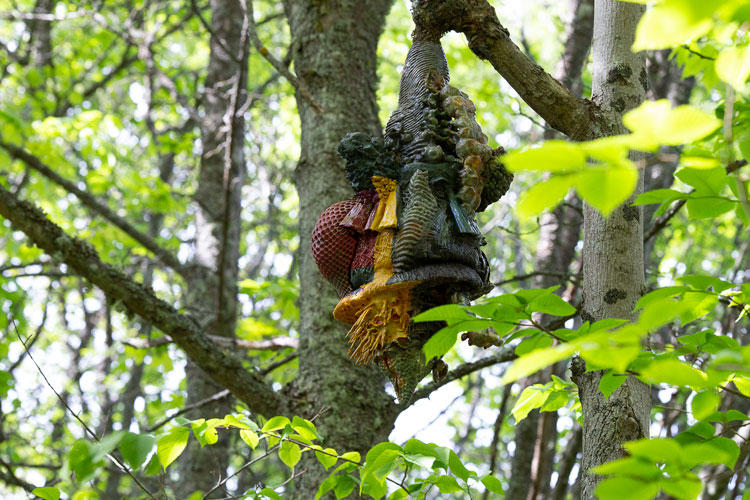
Adrián Villar Rojas, From the series The End of Imagination, 2023. Courtesy of HAM, Helsinki Biennial and Viljami Annanolli.
Then there is PHOSfate, by the poet and artist Mohamed Sleiman Labat and the artist Pekka Niskanen, inspired by the sandoponic gardens created by Algeria’s Sahrawi people, now resident in refugee camps, where Sleiman Labat was born and raised. In the camps, they have managed to grow coriander, carrots, potatoes and kale, and these raised sandpits are hosting tiny, stubbly crops of the same, though not enough to sustain anyone at this point. The geopolitical links the two artists seek to create for this commission are that the Sahrawi people have been displaced by large-scale mining for phosphates in the Western Sahara and that these phosphates, used in fertilisers, are poisoning marine life as they run off Finnish farms into the Baltic sea, though you would have to read the caption to realise this – it’s not something the artwork itself articulates.
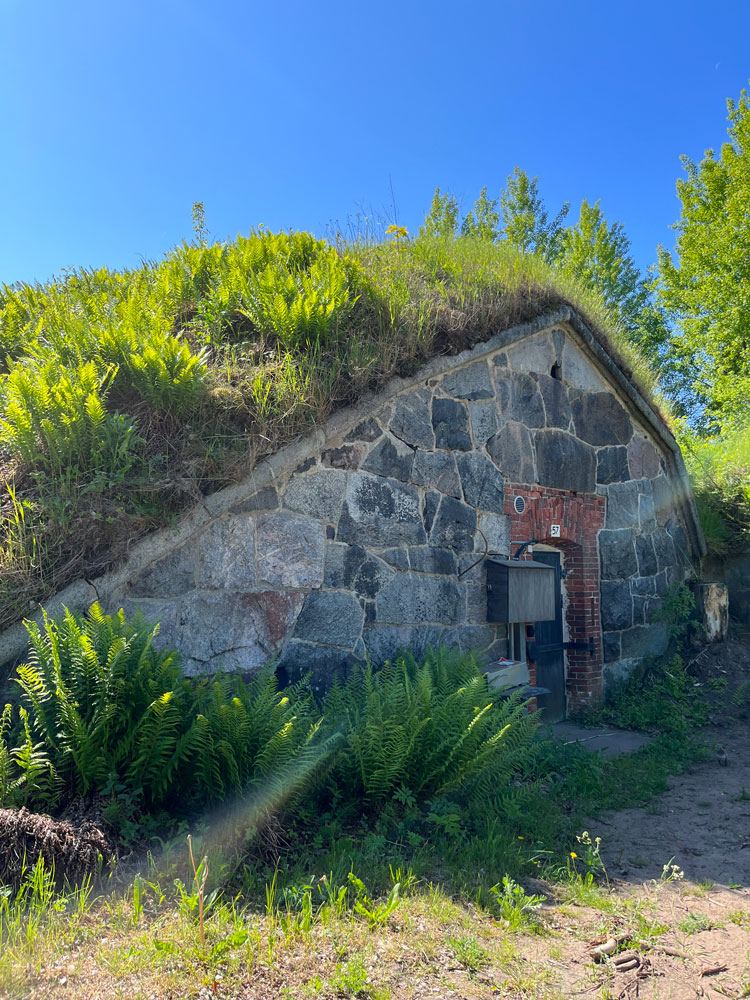
The hobbity charm of the long abandoned storage tunnels. Photo: Veronica Simpson.
Things start to become visually more arresting in the many underground structures and tunnels in which the island’s military occupants stored ammunitions, equipment and supplies. They are embedded across the island, their metalwork rusting, the 200-year-old bricks, or more contemporary concrete stained and crumbling, their roofs overgrown with vegetation, giving a post-apocalyptic, Hobbit-like charm to the landscape. The interiors are chilly but richly textured and, as with last year, they serve as a picturesquely ruinous foil for the works installed in them.
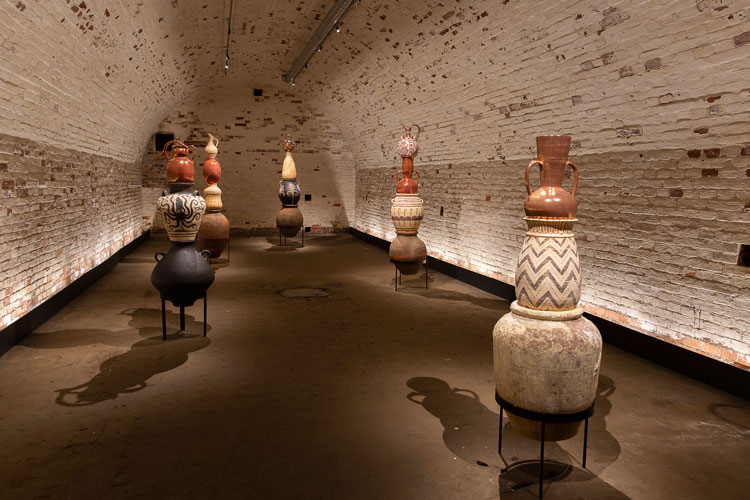
Asunción Molinos Gordo, ¡Cuánto Río Allá Arriba!, 2023. Courtesy of HAM, Helsinki Biennial and Sonja Hyytiäinen.
The highlights include Asunción Molinos Gordo’s installation ¡Cuánto Río Allá Arriba!, a range of totemic ceramic sculptures made for carrying or storing water, “paying tribute to the mindset behind the thousands of uses and forms of water pottery conceived by farming communities”. One particularly spiky vessel looks uncannily like a landmine, evoking the tunnel’s former contents, perhaps. The text asks: “Is it not high time that we returned to the ancestral ethical system of cooperation and solidarity that governed the planet’s resources until recently?” Of course it is, but is that what the artwork is saying?
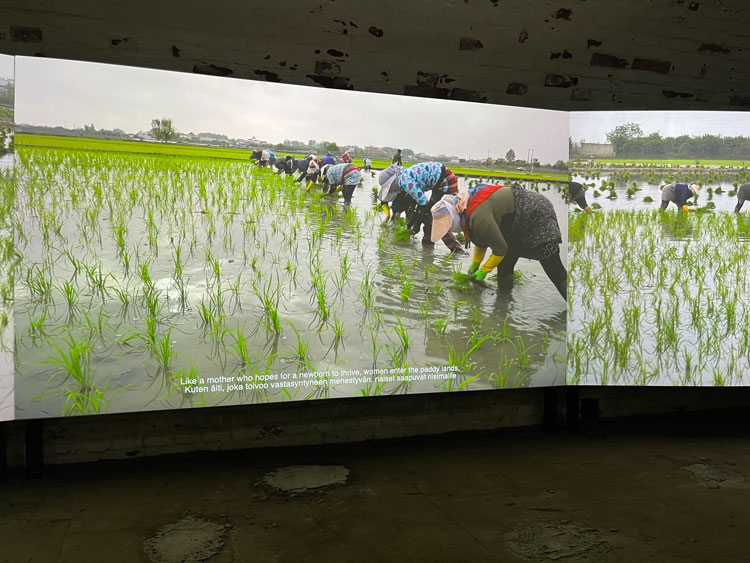
Sepideh Rahaa. Songs to Earth, Songs to Seeds, 2023. Photo: Veronica Simpson.
Another standout installation is Songs to Earth, Songs to Seeds (2023), Sepideh Rahaa’s three-channel film in the adjacent underground structure. It comprises 20 meditative minutes documenting the slow, backbreaking labour of preparing, germinating, sowing, caring for and then harvesting rice. Filmed in the northern Iranian paddy fields of Mazandaran, it is accompanied by a recording of the haunting songs sung by working women over the centuries to unite them in their pace and mindsets. It is a stark reminder of the labour involved in generating the bowls of steaming, fresh-cooked rice that we take for granted.
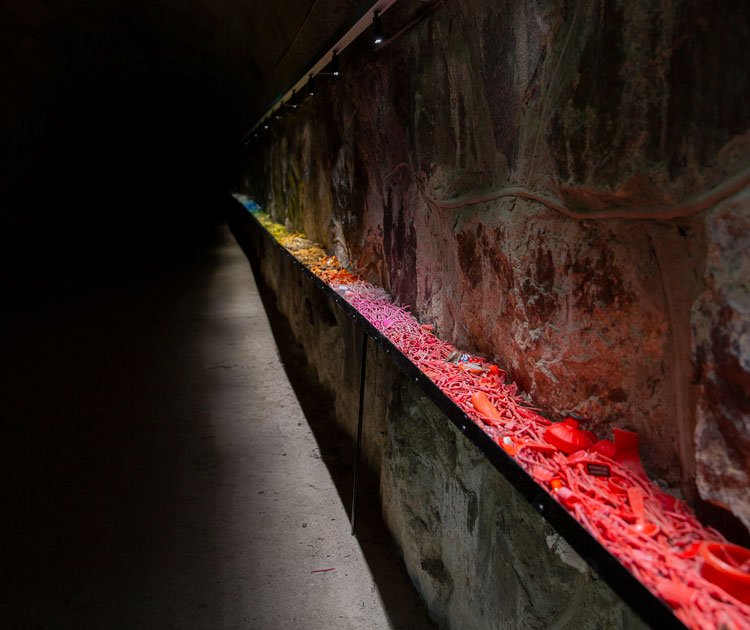
Tuula Närhinen, The Plastic Horizon, 2019–23. Courtesy of HAM, Helsinki Biennial and Sonja Hyytiäinen.
The next tunnel along hosts The Plastic Horizon (2019-23), an installation by Tuula Närhinen. The artist, whose studio is on Harakka Island, has been collecting and observing marine detritus emerging from the Baltic Sea since 2006. She has assembled a rainbow of plastic jetsam for us here, extending along a shallow shelf at the far end of the tunnel. Our guide says that some of these plastic strips are from dynamite bundles exploded in the construction of a new bridge over the Baltic. One of the worst side-effects of this plastic waste, as the caption reminds us, is that it is extremely harmful to marine life.
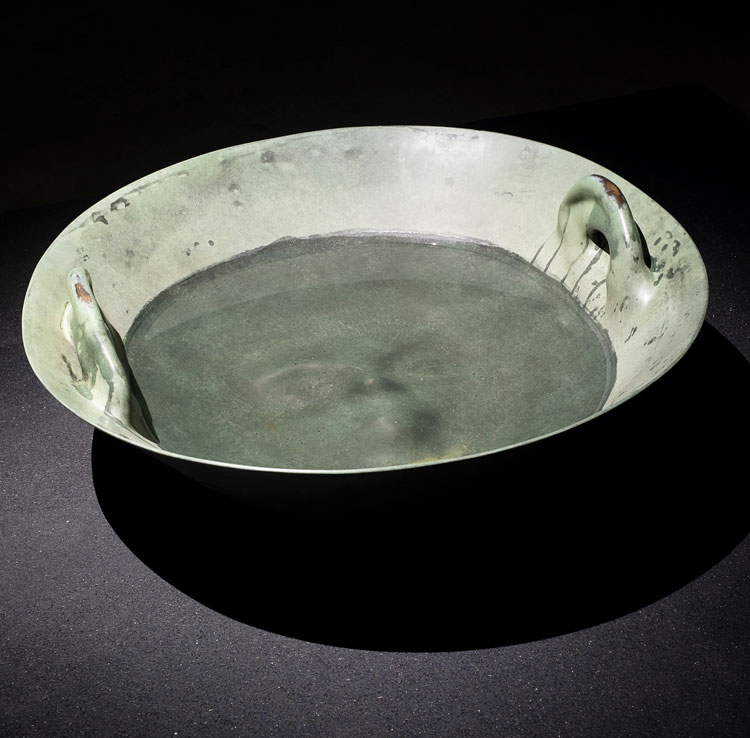
Jenna Sutela, Pond Brain, 2023. Courtesy of HAM, Helsinki Biennial and Kirsi Halkola.
Another nearby tunnel installation, Pond Brain (2023) by Jenna Sutela, makes simple but powerful use of sound and materials. A large metal bowl adorned with two shiny bronze handles is half filled with water, and visitors are encouraged to wet the handles, then rub them vigorously to try to generate a sound, much like the bronze bowls used in meditation rituals. As you attempt this task – and it’s a hard one; I tried and failed – you have to lean into the bowl, which reveals the hidden impression of a face. The elemental soundscape booming around the room as you do so is drawn from live and recorded sounds from the vibrating bowl, as well as those generated by machine-learning algorithms tuning in to signals from the wider environment, “including outer space and under the sea”.
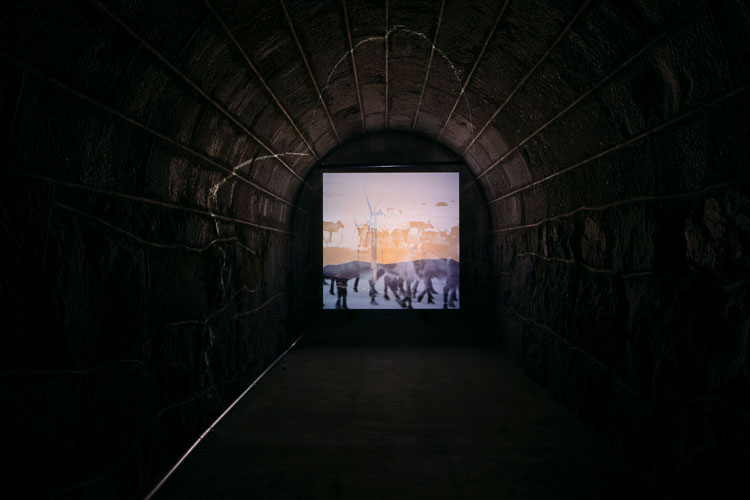
Matti Aikio, Oikos, 2023. Courtesy of HAM, Helsinki Biennial and Kirsi Halkola.
A film work in the next tunnel, Oikos (2023) by Matti Aikio, is also accompanied by a powerful soundtrack. Aikio grew up among reindeer herders in the Sámi community in Finland’s far north, an area increasingly threatened by excavation and exploitation. He offers up a slow collage of scenes and sounds from that precious natural landscape and way of life, including reindeer-herding songs and the changing of the seasons: a reminder to treasure and value the lands, ecologies and rituals that have sustained us for millennia.
Continuing on the forest path, you emerge at the grassy plateau below the island’s main viewing platform. Here, at the previous Biennial, Laura Könönen had placed huge sculptures painted blue to look like broken piece of cracked sky (No Heaven Up in the Sky, 2021). Today, nothing is visible across this deserted plateau, but I am told there is a small green offering by Villar Rojas, which is too obscurely positioned to be seen with my naked eye. Instead, what you do notice is how vividly the wildflowers glow with their glorious yellow blossoms, and how lush the island looks with its unspoilt greenery and diversity. It is said that more than 1,000 species of butterfly, including many rare ones, are thriving here because there has been almost no human intervention since 1917. So, perhaps it is the island itself we should be appreciating, with the artworks simply playing a supporting role.
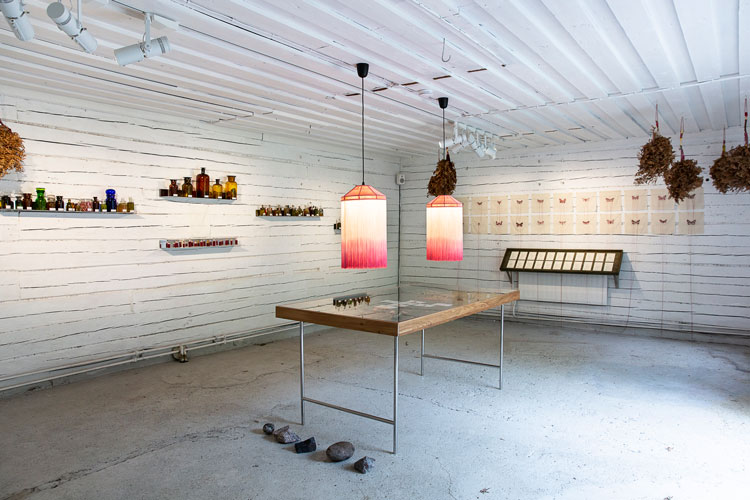
Lotta Petronella and Lau Nau with Sami Tallberg, Materia Medica of Islands, 2023. Courtesy of HAM, Helsinki Biennial and Sonja Hyytiäinen.
In that spirit, before boarding the return ferry to Helsinki, I come across probably my favourite installation, the site-specific and durational work Materia Medica of Islands (2023). Inside an ageing wooden shed, the artists Lotta Petronella and Lau Nau along with Sami Tallberg, a Finnish chef celebrated for conjuring up delicious dishes from foraging expeditions, have laid out for us a presentation that speaks of close attention to nature, to plants and animals, and expertise in deploying their benefits. Dried flowers and herbs gathered locally hang on the walls, while some are bottled and presented in their medicinal forms, along with herbal tinctures. Portraits of the island’s moths and butterflies have been embroidered and combined with poems in their honour. The installation is in memory of Ilma Lindgren, who secured the people the right to roam and forage across Finland. Sound works include a lamenting choir and nightly recordings of moths, and many live events are planned for the duration of the biennial.
This year’s curator, Joasia Krysa, and the biennial’s programme partners have been trying to avoid the damaging impact of humans on the landscape for 2023’s offering. Krysa is keen to make this clear when I ask about the lower visual impact of this year’s biennial. “The first biennial had more than 40 works on the island and it was quite intense. This time, we wanted to stretch it beyond the island to allow for a slower pace for people and allow their relationship with nature to take centre stage.
“Our approach to the island is to treat it gently. It is a protected site and unless works are carefully situated and respect the island, you’re not giving it the care it needs. The impact of 40 works on the land is huge. Now we have 15, embedded in the island. We are aiming for a fusion between art and nature, for conceptual, but also for environmental reasons.”
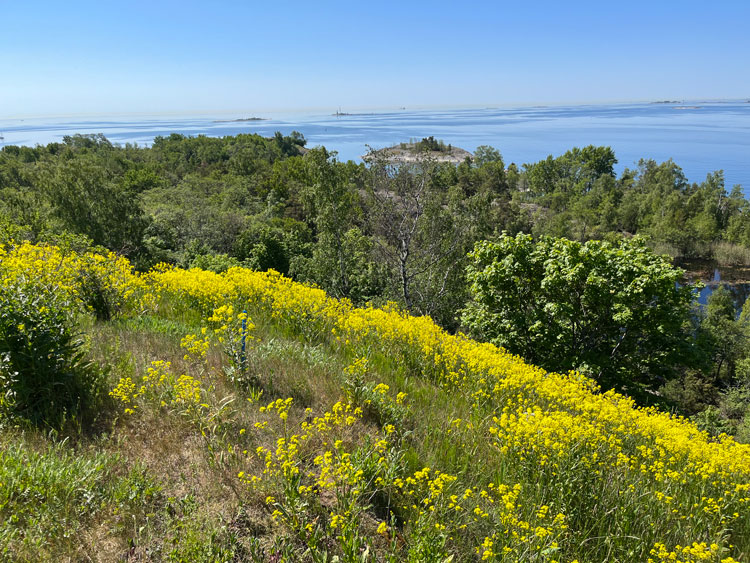
Valisaari island in full flower in June. Photo: Veronica Simpson.
I ask if a second biennial is a bit like a difficult second album for musicians, where it is hard to replicate the wow factor of the debut, even though it will have had many years to gestate before emerging as something fresh and new? She finds the idea amusing, but apt. She says the approach had shifted by the time she came on board: “We have done something very different in terms of expanding venues. We have taken work to the mainland. We have placed some of it outside the city. We have brought works that haven’t been seen here before but commissioned a lot of works that are very much context specific.
“Also, we had one year less. They had three years [because of the pandemic]. We had one and a half. We also had half the budget.” Rather than deploy the bigger part of the budget on “wow factor” installations on the island, Krysa has worked hard to weave the biennial and its programme into Helsinki’s wider creative and educational ecology. “We have worked closely with the two art universities, involving students in fine art and also curating,” she says. “The first biennial was all about the artworks. The second one is about art and a very big element on the discursive aspect. We are examining the state of nature and technology. Artists in this field are a very particular community. They are often quite young and working in a very different way.”
Part of this curatorial evolution is to draw Finns – and the people of Helsinki in particular – into different aspects of the programme. There are works placed in the public realm, including inside Helsinki’s Oodi library. A major chunk of the biennial is now situated at Helsinki Art Museum (HAM). The work here, Krysa says, is about the wider political landscape. In fact, she is keen that people see the work at HAM first, before heading out to the island.
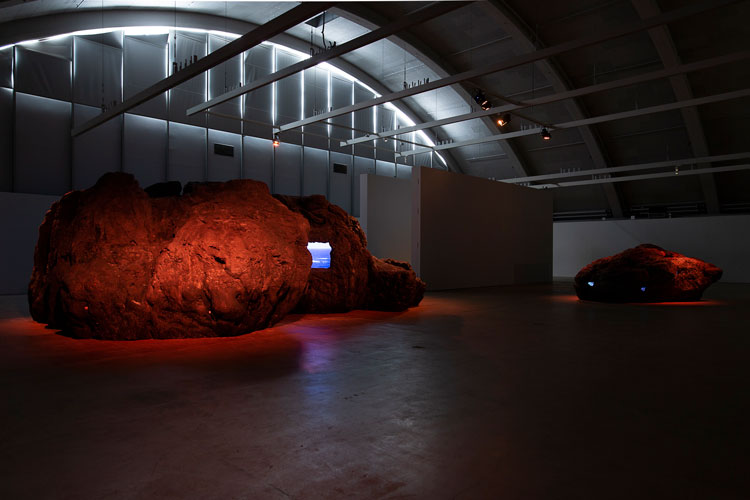
Diana Policarpo, Ciguatera, 2022. Courtesy of HAM, Helsinki Biennial and Sonja Hyytiäinen.
At HAM, one huge, dark room is dedicated to Ciguatera (2022), a compelling installation by Diana Policarpo. Enormous fake rocks embedded with small, glowing video screens are enveloped in a shimmering, sci-fi soundscape. Inspired by a research trip to the Savage Islands in the North Atlantic Ocean, Ciguatera is “a case study mapping colonial history through the tracking of natural biodiversity”, in which videos weave stories based on science as well as science fiction with voices of people from the island and “voices of the island itself”.
Närhinen, whose Plastic Horizon featured on Vallisaari, shows here an installation that she developed while artist in residence at the Beaconsfield gallery in London. There, her explorations were focused on the Thames, which she portrayed as a time-machine. Objects she salvaged while mudlarking at low tide were rendered as ghosts in her cyanotype contact prints. There are also mud chromatograms and some of the equipment with which she conducted her experiments. At Beaconsfield, the imagery of classic Thames jetsam – the stick-like stems and tiny bowls of ancient clay pipes, and assorted plastic packaging debris – seemed more poignant because of their location. In the Victorian schoolroom setting of Beaconsfield’s main gallery, her collecting equipment and clay workings evoked hours of painstaking research and experimentation, but ranged across two long white walls here, their impact seems diminished. But there is a creepy resonance between her quiet, respectful endeavours and those summoned in the nearby structures presented by Bita Razavi. First seen as part of an Estonian presentation at the 2022 Venice Biennale, here we have Elevated Platform (2022) and Kratt: Diabolo No 3 (2022), the latter evoking a mythological creature from Estonian folklore.
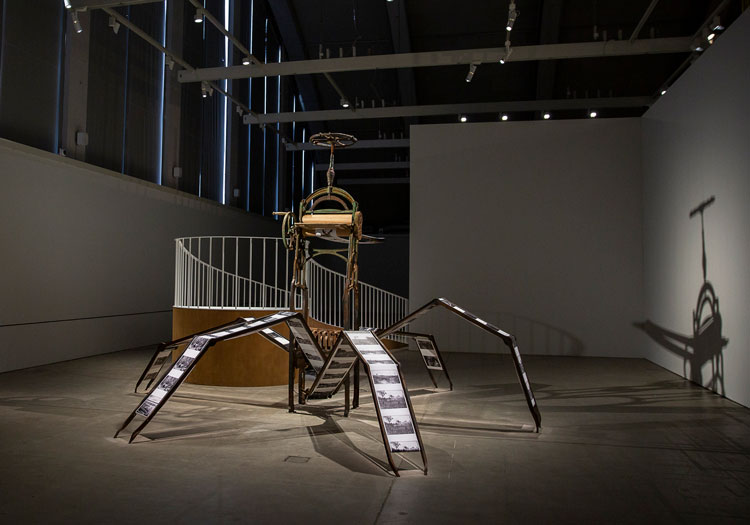
Bita Razavi, Kratt: Diabolo. No. 3, 2022, and Elevated Platform, 2022. Courtesy of HAM, Helsinki Biennial and Sonja Hyytiäinen.
Each leg offers a kind of conveyor belt of botanical drawings by Emilie Saal (1871-1954), who worked as botanist for the East India Company in Indonesia. Although her work was about the painstaking recording of nature in all its wonder, we are reminded that this observational art then became part of the wider colonial machinery to profit from plants and their properties.
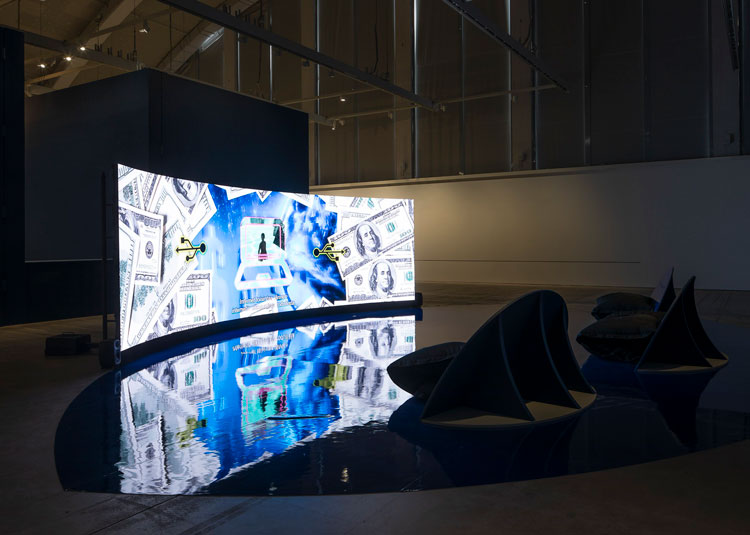
Tabita Rezaire, Deep Down Tidal, 2017. Courtesy of HAM, Helsinki Biennial and Kirsi Halkola.
Tabita Rezaire’s Deep Down Tidal video work explores the “entangled narratives associated with the sea, from submarine cables and sunken cities to drowning bodies, hidden histories of navigation and sacred signal transmission … the submarine fibre-optic cables that transfer our digital data”. These cables apparently follow well-worn colonial shipping routes. Everything is connected. I can see how a visit to this richly imagined, geopolitically and historically rich series of installations would set people up for playing closer attention to the quieter, more thoughtful, nature-infused island art.
Krysa is right that we should be mindful of art as spectacle, especially if we are siting it outdoors, in spaces where drilling, underpinning and construction work is required, and particularly for an art festival that is supposed to be about respecting nature. However, the art placed outdoors still needs to persuade, seduce, convince or provoke – or what is the point of paying the ferry fare, which has gone up from €8 return in 2021 to €19 this year (although it is free on the last Friday of every month)?
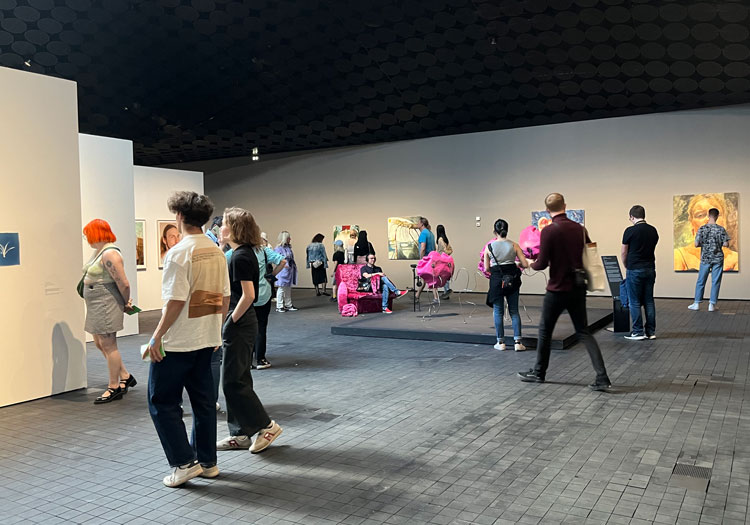
Youthful visitors abound at Amos Rex Generation 2023 show. Photo: Veronica Simpson.
In its ecological principles, however, the Helsinki Biennial is bang on message. We do need to think carefully about what art is for, how it is made and for whom. This is where the city has stepped up and shown its true, creative colours, in what could be termed the “collateral” events that fill the surrounding spaces and institutions. Amos Rex Art Museum was brimming with skilful offerings from Helsinki residents aged 15 to 23, for its show Generation 2023, and it was packed with viewers of that age – more than I’ve ever seen for a traditional gallery offering. The Kiasma Museum of Contemporary Art offered a stunning exhibition by Daniel Steegmann Mangrané, which interrogated through sound, movement, film and sculpture, the very basis on which we trust our perceptions as we move through the world, challenging our ideas of what is and isn’t “natural”. More specific meditations on the Finns’ military and naval history and their impacts on the sea and landscape are beautifully installed on Suomenlinna, a sea fortress that has long been receiving visitors, in a barely refurbished military building. The Unknown Baltic Sea features seven Finnish artists (Jan Eerala, Kaisu Koivisto, Anna Nykyri, Meeri Koutaniemi, Renja Leino, Arja Renell and Raimo Sundelin) whose work is all about the Baltic and its mysteries, legacies and myths. Their setting within the building is also spectacular, thanks to the scenographer Kati Lukka of the Finnish National Theatre.
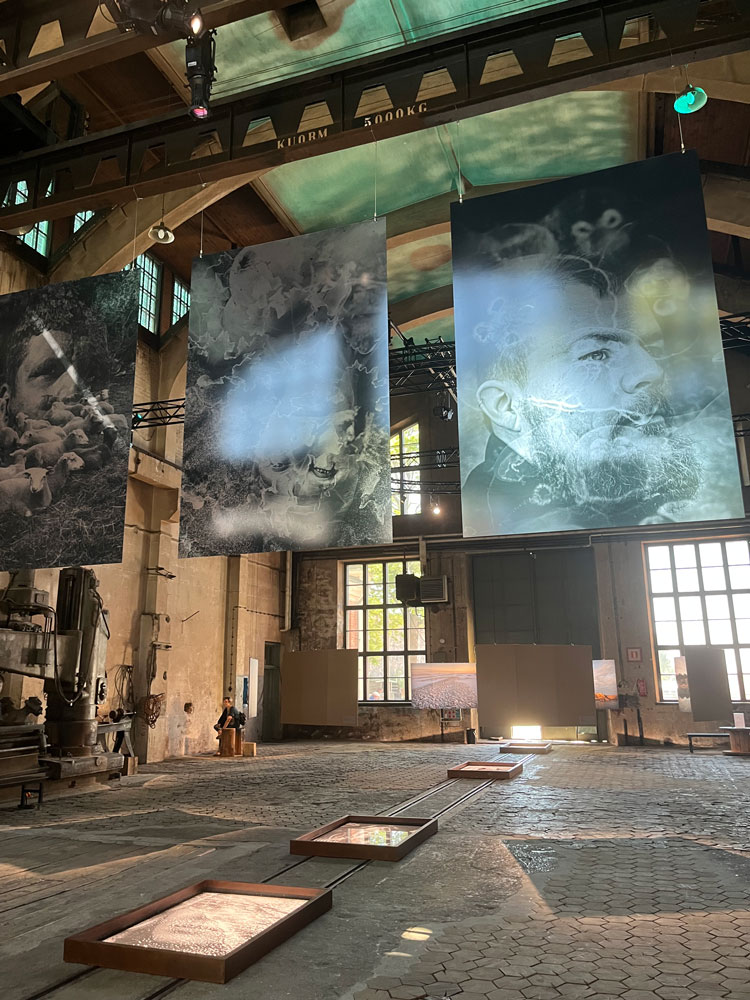
Installation view of The Unknown Baltic Sea on Suomenlinna island. Photo: Veronica Simpson.
As one element within a collective programme, this year’s biennial does a great job of showing the confidence and scope and scale of the wider Helsinki art and curatorial community. It demonstrates that there is plenty on offer within the city and its environs to attract regular cultural tourists outside the biennial schedule. And that – for a country which 10 years ago turned down the chance of a Guggenheim on its harbourfront because it felt it could represent its own artistic DNA without this US museum brand’s assistance – speaks volumes for the way in which it has nurtured and evolved its contemporary art skills, professionalism and vision.
• The Helsinki Art Biennial was curated in collaboration with Helsinki Art Museum, the Museum of Impossible Forms, TBA21-Academy, Critical Environmental Data, ViCCA@Aalto Arts and an AI Entity.
• There is additional online content at newdirectionsmayemerge.com.